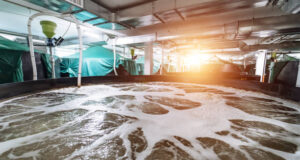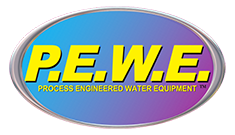
Wastewater treatment plants are facilities that clean sewage and industrial water before it is released back into the environment. Treating wastewater is crucial for public health and the environment. Without treatment, untreated sewage can carry dangerous germs and chemicals into rivers and drinking water, causing diseases and pollution. In the U.S. alone, about 34 billion gallons of wastewater are treated every day. Proper treatment not only prevents waterborne illnesses but also protects fisheries, wildlife, and tourism by keeping rivers and lakes clean. In fact, global studies show that every dollar spent on sanitation and treatment yields many dollars in health and economic benefits. In short, clean water keeps people healthy and ecosystems thriving.
How does wastewater treatment work? In a typical treatment plant, sewage flows through a series of tanks and filters. First, grit and large solids are removed. Then, biological processes use tiny living organisms (bacteria and other microbes) to eat the waste in the water. Finally, the water is disinfected and released, and the remaining sludge is de-watered and safely disposed. Traditional biological treatment often uses activated sludge (where bacteria float in tanks) or trickling filters (where water trickles over a bed of rocks with microbes). MBBR (Moving Bed Biofilm Reactor) combines the best of these approaches: it gives microbes more surface to live on, but keeps the system flexible and compact.
What Is MBBR Technology and How It Works
Moving Bed Biofilm Reactor (MBBR) technology is an advanced biological treatment method. You can think of it like a fish tank filled with millions of tiny plastic “rafts” or carriers (often shaped like small wheels or cylinders). These carriers float freely in the wastewater tank. Inside, helpful bacteria attach themselves as a thin “biofilm” on every surface of each tiny raft. Aeration bubbles or mixers keep the carriers in motion, like a gentle whirlpool. As raw sewage flows through, the bacteria on the carriers eat the organic pollution (the waste food in the water), breaking it down into harmless substances.
The key idea is attached growth on moving media. Unlike a conventional “activated sludge” tank (where bacteria are suspended like floaters in water and continually recycled), in MBBR the bacteria stay attached to the carriers. This means the system can treat incoming water continuously without needing to recirculate sludge. The carriers provide a huge total surface area for microbes – often hundreds of square meters per cubic meter of carrier. Picture each carrier as a tiny sponge or house for bacteria. Because they are mixed throughout the tank, they come into contact with all the wastewater. It is like having millions of little water-cleaning units all at once.
A simple step-by-step of a typical MBBR process:
- Biofilm forms: Bacteria stick to the plastic carriers and grow a slimy layer (biofilm).
- Mixing: Air or mechanical mixers keep the carriers moving in the tank so every part of the water touches the biofilm.
- Degradation: The bacteria consume organic waste (food scraps, human waste, etc.), converting it mostly into carbon dioxide, water, and new bacterial cells.
- Clarification: Treated water leaves the MBBR tank and goes to a settling tank or filter to remove any detached solids, leaving clear effluent.
Because the carriers (and the bacteria on them) stay in the tank, MBBR systems do not need the complex sludge recycling pumps that some conventional plants use. In practice, operators may just let excess biofilm flake off naturally when needed.
Advantages of MBBR over Traditional Methods
MBBR offers many practical benefits compared to older systems. Key advantages include:
- Small Footprint (Space Saving): MBBR tanks can be much smaller than traditional tanks for the same flow. Since bacteria cling to carriers instead of floating, a high concentration of microbes can clean the water in a smaller tank. For example, an MBBR tank may be only a third the size of an activated sludge tank for equivalent performance. This compact design saves land and construction costs, especially important in crowded cities or factories.
- Retrofit and Expandability: It’s easy to upgrade an existing plant by simply adding MBBR carriers. A basin that was once conventional can be turned into an MBBR tank by adding carriers and an aeration system. MBBR systems are modular – you just add more carriers or tanks to increase capacity. This means a plant can be scaled up gradually as population or pollution grows, without rebuilding everything from scratch.
- Resilience to Fluctuations: The biofilm on the carriers is very stable. MBBR systems handle sudden changes in flow or pollutant levels better than some other methods. For example, if a factory suddenly dumps a heavy load of organic waste, the extra bacteria on the carriers can ramp up and process it without crashing. Tests show MBBRs “self-adjust” to higher or lower waste concentrations, so operators rarely need to chase problems day-to-day.
- Low Sludge Production: Because most bacteria stay attached, MBBR generally produces less sludge than suspended-growth systems. Less sludge means lower costs for sludge handling and disposal.
- Simpler Operation: Once set up, MBBRs are fairly “hands-off” compared to some older plants. The mixing action keeps carriers self-cleaning, so they don’t clog easily. Operators do have to monitor the system (checking that oxygen levels, flow rates, and pH are OK), but the biology tends to regulate itself, making the plant easier to run day-to-day.
- High Treatment Performance: MBBRs remove organic matter and nutrients very effectively. The high surface area and dense microbial communities ensure that contaminants are “eaten” thoroughly. Many MBBR plants consistently meet or beat regulatory discharge limits.
- Energy Efficiency: MBBRs often use less energy per unit of treatment. Since they’re compact and efficient, the aeration (which is a major energy user) can be optimized.


